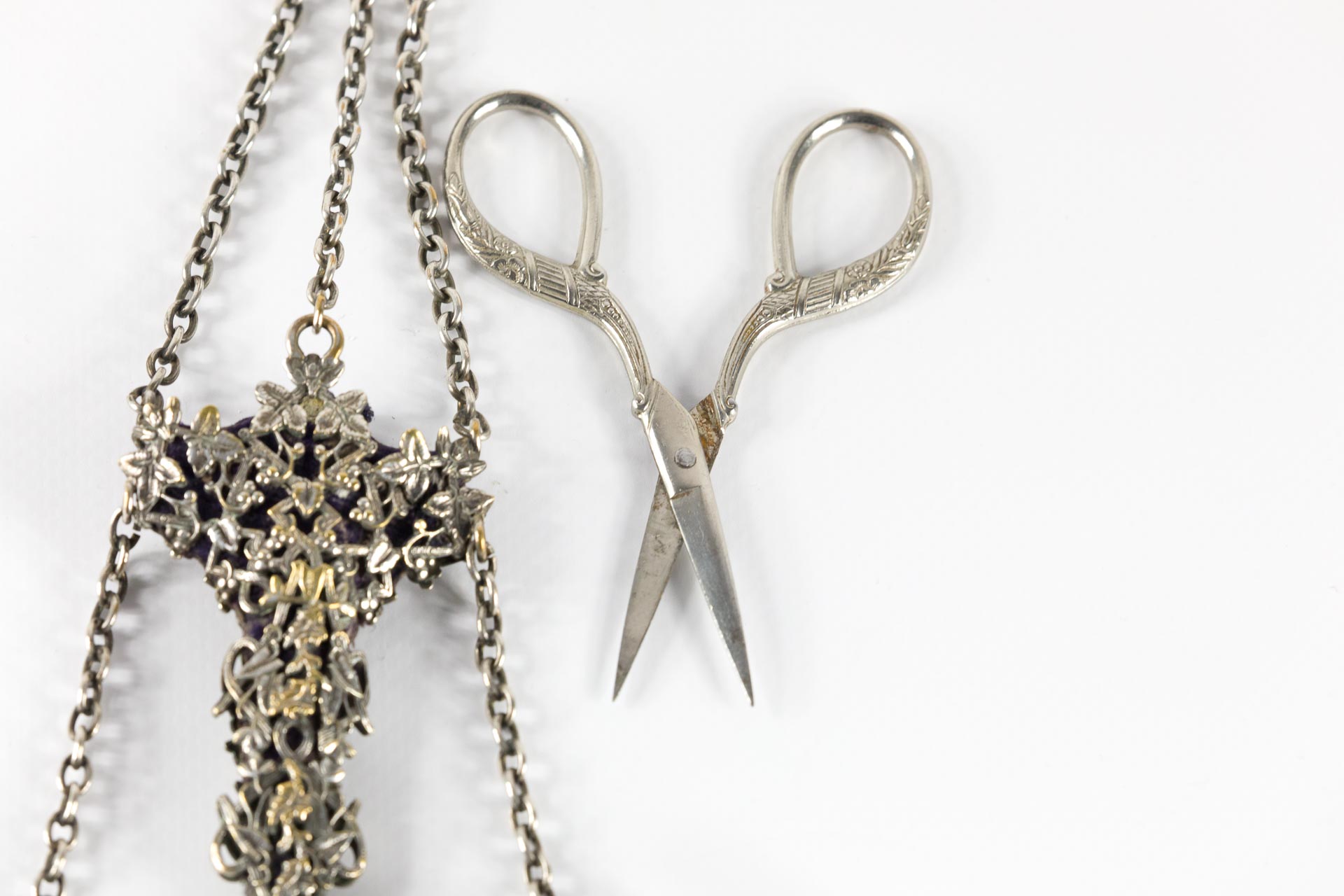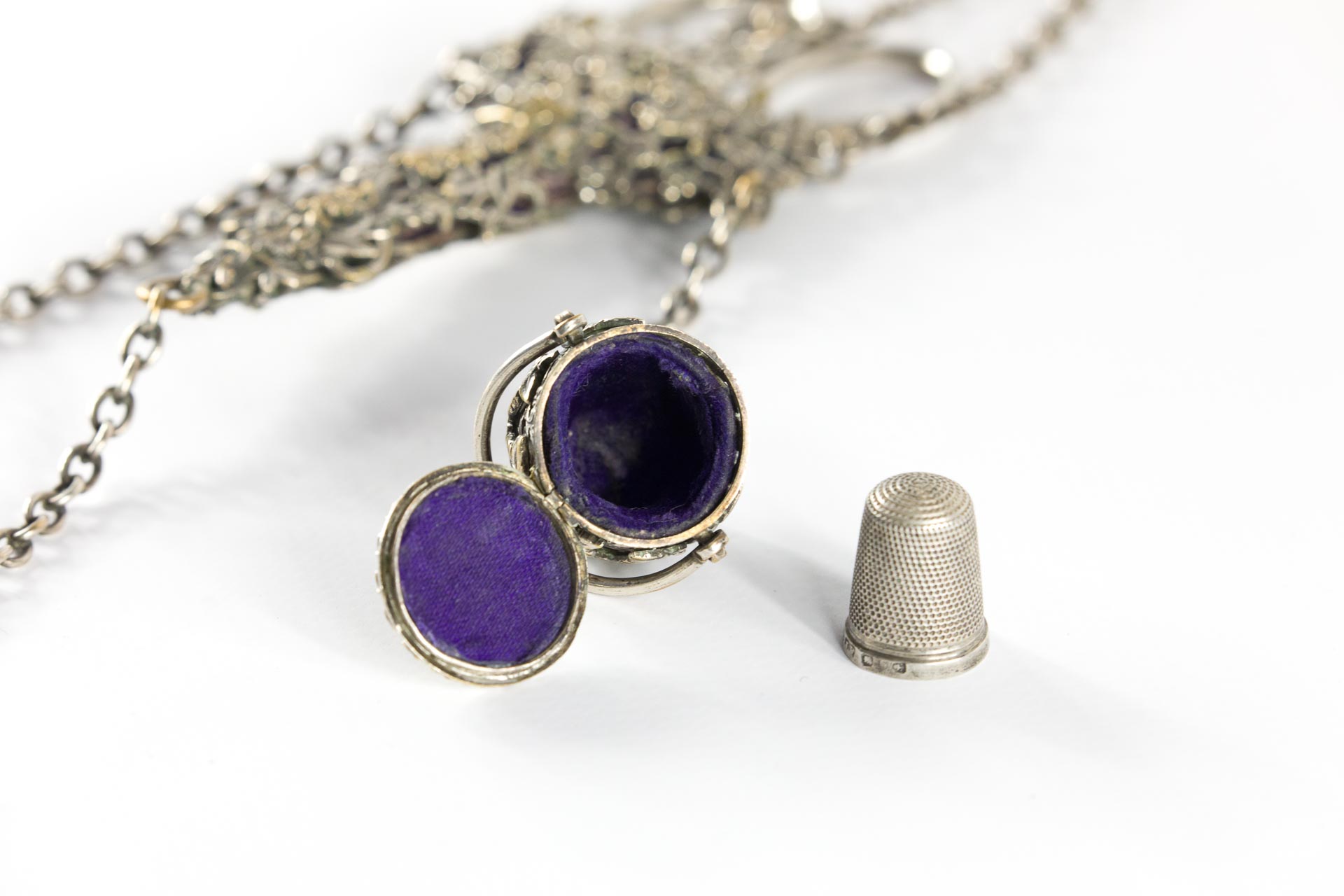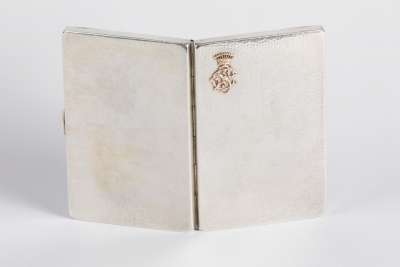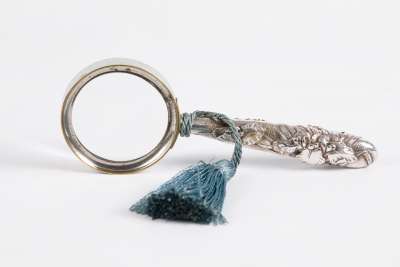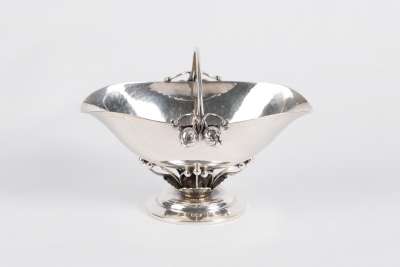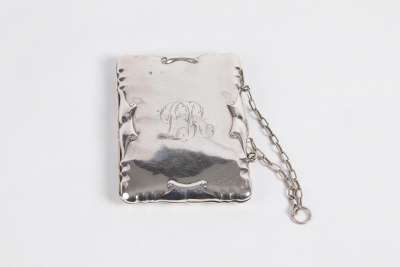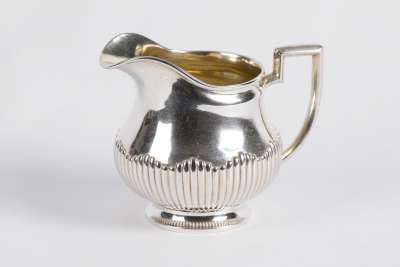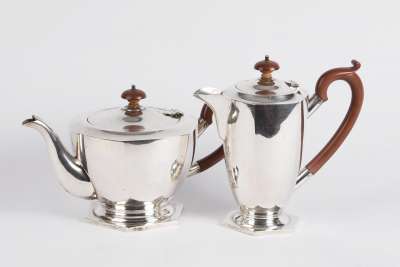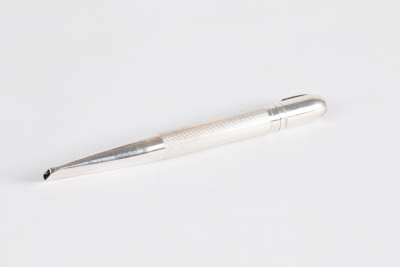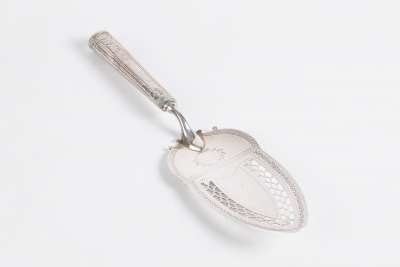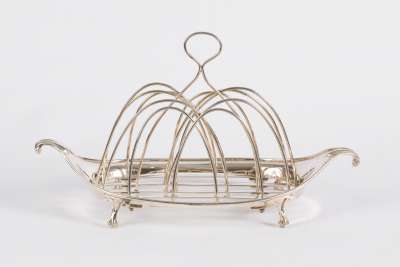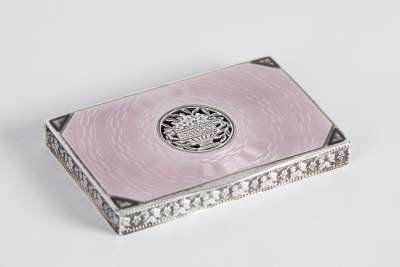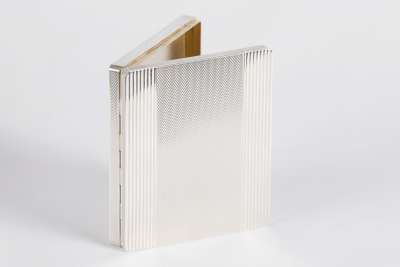This European chatelaine, dating from around 1890, is a fine example of late 19th-century craftsmanship. Featuring a silver-plated finish, it showcases the intricate detailing characteristic of that era. The chatelaine includes a pair of scissors in a sheath, a thimble holder with a sterling silver thimble, a pin cushion, and a needle holder. The scissors and thimble are later additions, offering modern functionality to this classic piece. Originating from Europe, this chatelaine reflects the practical elegance of its time, designed to be worn at the waist for ease of access to essential sewing tools.
Condition Report
This antique chatelaine is in good condition, exhibiting minimal wear consistent with its age and use. The silver-plated surface retains its lustre with only minor patina, which is typical for pieces of this vintage. The scissors and thimble, being later additions, are in newer condition compared to the rest of the set. The intricate links and attachments remain secure, ensuring the chatelaine's functionality is preserved. The thimble holder, pin cushion, and needle holder are all intact, demonstrating the durability of the materials used. Overall, this chatelaine is a well-preserved example of 19th-century utility fashion.
Dimensions
Weight: 120gm, Length: 38cm.
Designed for Seamstresses
Chatelaines were essential accessories for seamstresses and homemakers in the 19th century, serving as a portable toolkit. This particular chatelaine would have been clipped to the waist, allowing the wearer to have immediate access to sewing tools. Each component—scissors, thimble, pin cushion, and needle holder—served a specific purpose, facilitating quick repairs and sewing tasks. This practical design reflects a period when efficiency and accessibility in sewing were highly valued, showcasing the ingenuity of everyday objects from that era.
Victorian Era Craftsmanship
This chatelaine embodies the Victorian era’s emphasis on utility combined with decorative elements. The silver plating and detailed craftsmanship are indicative of the style prevalent during the late 19th century, where even practical items were given aesthetic consideration. The design reflects the ornate yet functional approach typical of the period, with intricate patterns and a thoughtful arrangement of tools. Such items were both practical and a statement of the wearer’s status and attention to detail, reflecting the values of the time.
Silver Plating Techniques
The chatelaine's silver plating was likely achieved through electroplating, a popular method in the late 1800s that allowed for a thin layer of silver to be evenly deposited over a base metal. This technique provided the appearance of solid silver while being more affordable and durable. The individual components of the chatelaine would have been crafted separately and then assembled, ensuring each piece was functional. The inclusion of tools such as the scissors and thimble required precise craftsmanship to ensure their usability and long-lasting performance.
European Craftsmanship
The chatelaine is attributed to European origins, where such items were commonly produced by skilled craftsmen. While the exact maker of this piece is not identified, it reflects the high-quality workmanship typical of European silversmiths of the time. These artisans were known for their ability to combine functionality with decorative elements, a skill evident in the detailed work on this chatelaine. The use of silver plating was a hallmark of European craftsmanship, offering a balance of beauty and practicality.
Collectors of Victorian Accessories
Chatelaines are highly sought after by collectors of Victorian accessories, prized for their historical significance and intricate design. This chatelaine, with its combination of original and added elements, represents the evolution of such items over time. Collectors are drawn to the detailed craftsmanship and the glimpse these objects offer into the daily lives of past eras. The enduring appeal of chatelaines lies in their unique blend of form and function, making them fascinating artefacts for those interested in the cultural history of fashion and utility.


